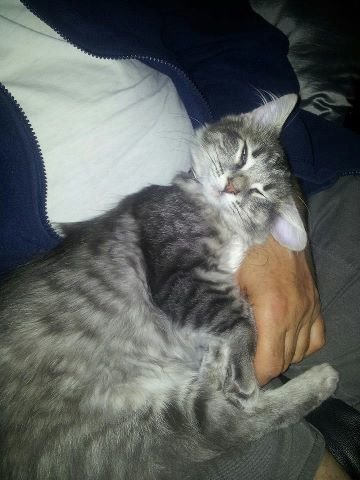hi there,
we got our two kitty's from two different places....the first cleo and her and her litter were dumped at a friends vet so no clue what she is....we were just told that she's a long haired domestic! the second is flik and we got her at a pet shop...they just had her down as a short haired domestic.....any thoughts??
we got our two kitty's from two different places....the first cleo and her and her litter were dumped at a friends vet so no clue what she is....we were just told that she's a long haired domestic! the second is flik and we got her at a pet shop...they just had her down as a short haired domestic.....any thoughts??


